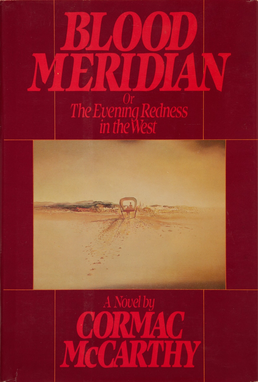Part 9
byPart 9 of Blood Meridian opens with Glanton and his group of mercenaries traveling through the vast, unforgiving expanse of the desert, their journey taking them across the desolate playa. The terrain is flat and barren, with nothing but the scorching sun and the looming mountains to the east breaking the horizon. As they trek deeper into the wilderness, the quiet atmosphere is broken only by distant sounds, eerily reverberating off the arid land. Their presence in this desolate area creates an overwhelming sense of isolation and foreboding, as if they are trapped in a place outside the normal realm of existence, cut off from the rest of the world by both nature and their own violent past.
As the group progresses, they notice a distant line of warriors, their figures nearly blending into the shimmering heat of the horizon. The warriors’ approach is ghostly, their movements almost ethereal as they draw closer, forcing Glanton to adjust their plans in response. The air grows tense as arrows begin to rain down on them, a sign of the impending battle. The Kid, ever the observer, stays low to the ground, taking precise shots at the warriors as they fade in and out of the distance, their forms barely visible in the heat. After the skirmish, the group regroups under the cover of creosote bushes, reloading their firearms and tending to their horses, many of which bear the marks of past conflicts. The atmosphere is thick with tension and wariness, a reminder that in the wilderness, even a brief moment of peace is fleeting and fragile.
The group continues their journey through the rugged landscape, eventually coming upon a dead man in a sandy wash. His body is marked by the remnants of past struggles, adorned with symbols and items that tell the story of his violent life. The Judge, with his characteristic cold calculation, examines the body and begins stripping the man of anything of value, claiming a raven-wing eyeshield and other trinkets that might have held some symbolic importance. He reflects on the man’s death, his thoughts seemingly drifting toward a larger philosophical contemplation about life, death, and the items that define one’s existence. The items are soon discarded, but the significance of what the Judge takes is not lost, highlighting his unnerving ability to distill value from the most grotesque of circumstances.
As the journey progresses, the group moves through increasingly surreal landscapes, encountering a lake made of gypsum where the earth itself seems to absorb their passage, leaving no trace of their existence. Dust devils dance in the distance, their movements mirroring the turmoil that churns within the men. They share stories of past pilgrims who were lost to the elements, their fate a grim reminder of the harshness of the world they navigate. That night, around a sparse campfire, the men eat a meager meal, the silence of their surroundings accentuating the starkness of their situation. The isolation and the grimness of their lives weigh heavily on them, as they continue their journey without hope of respite, constantly aware of the violence that has come to define their lives.
The next day, the group stumbles upon an abandoned diligence, a relic of a past long forgotten. They scavenge the remains, taking what they can find, their efforts fueled by desperation and the necessity of survival. As they comb through the wreckage, the inevitability of decay and time becomes apparent, as the land and its remnants seem to surrender to the harsh realities of life. The group pushes on into the mountains, encountering remnants of civilization that have long since fallen into ruin. A brief interaction with fellow travelers emphasizes the theme of isolation that pervades their existence, as relationships are formed and broken in an instant, driven by the primal instinct to survive. The chapter ends with a haunting image of the group moving into the darkness, the landscape around them filled with the ghosts of what was and the brutal reality of what is. Their journey continues, driven by violence, survival, and the relentless passage of time, with each step taking them further into the unknown.

